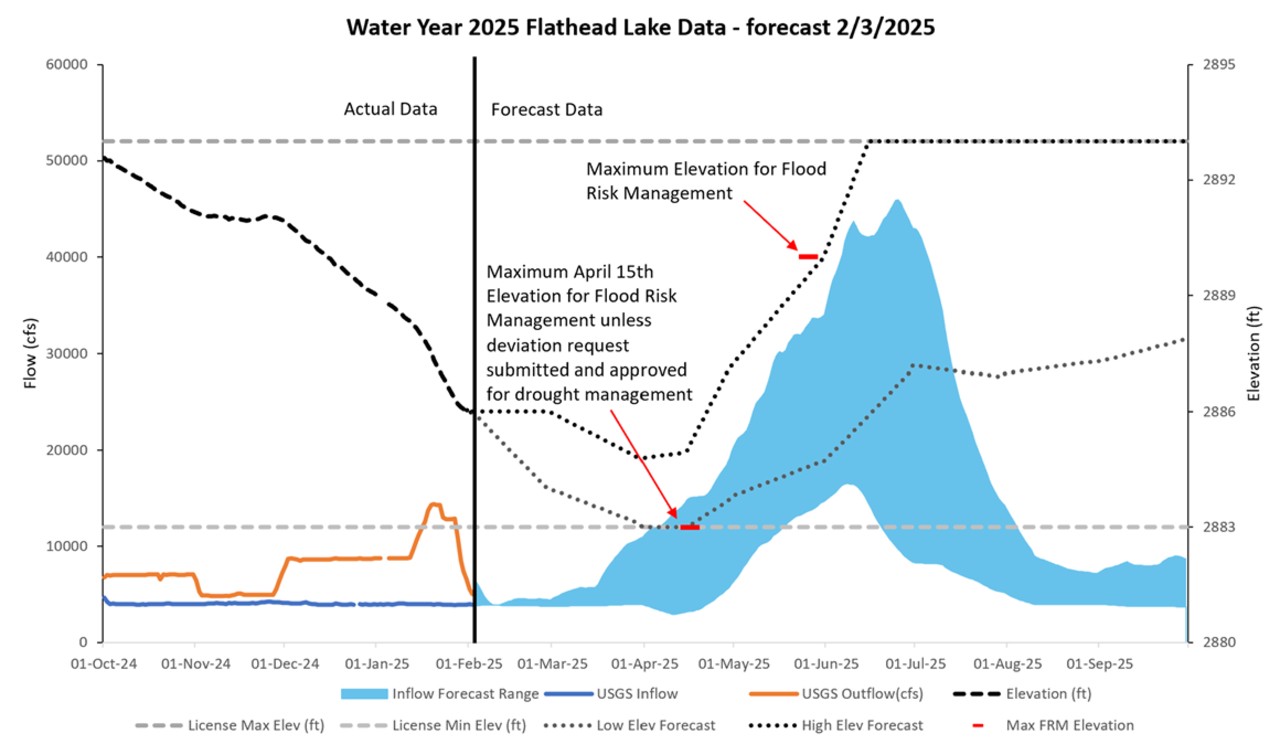Flathead Lake Data
July-22-2024_Lake-Data
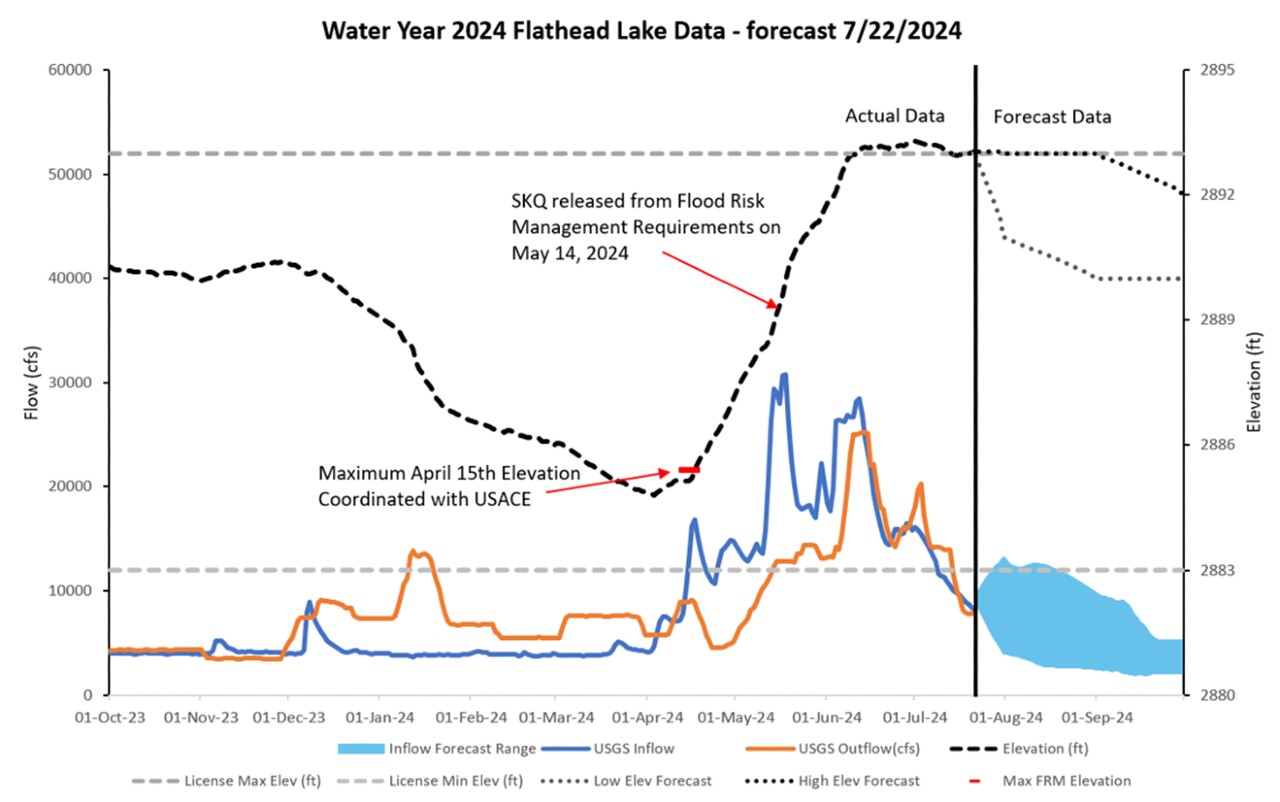
Flathead Lake remains at full pool. The water supply forecasts did not change much this week. Project outflows are likely to slowly decrease as Flathead Lake inflows recede.
SKQ project outflows and the Flathead Lake elevation are dependent on many variables including lake inflows, weather, the demand for electricity, and non-power constraints such as the downstream fishery and flood risk management needs.
July-15-2024_Lake-Data

Flathead Lake remains at full pool. The water supply forecasts did not change much this week. Project outflows are likely to continue decreasing as Flathead Lake inflows recede.
SKQ project outflows and the Flathead Lake elevation are dependent on many variables including lake inflows, weather, the demand for electricity, and non-power constraints such as the downstream fishery and flood risk management needs.
July-8-2024_Lake-Data

Flathead Lake remains at full pool. Thunderstorms kept the inflows higher than forecasted. The water supply forecasts did not change much this week and summer flow volume remains near 68% of average. Project outflows will continue decreasing as Flathead Lake inflows recede.
SKQ project outflows and the Flathead Lake elevation are dependent on many variables including lake inflows, weather, the demand for electricity, and non-power constraints such as the downstream fishery and flood risk management needs.
July-1-2024_Lake-Data
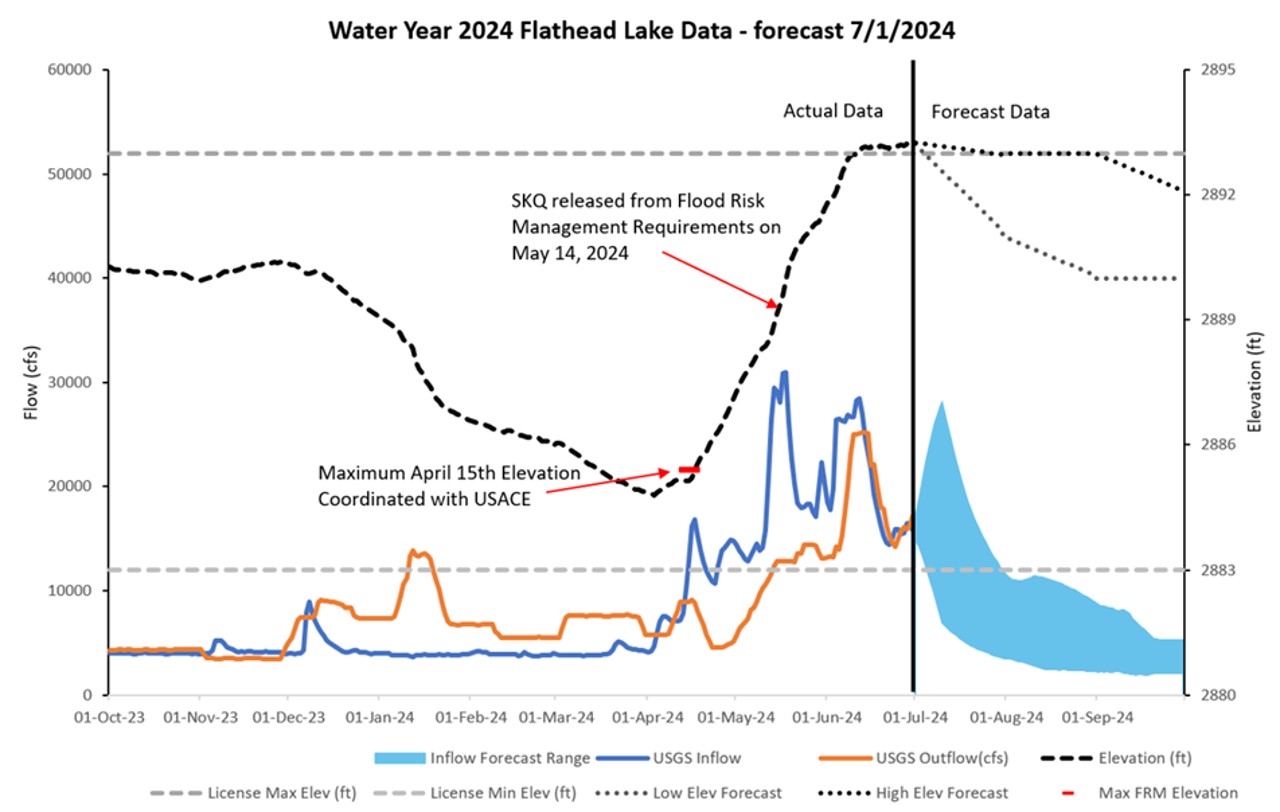
Flathead Lake remains at full pool. June precipitation events kept the inflows higher than forecasted and the lake continued to fill. The water supply forecasts increased almost 5% and summer flow volume is now near 69% of average. Project outflows have increased in the near term and will transition to decreasing once Flathead Lake inflows recede.
SKQ project outflows and the Flathead Lake elevation are dependent on many variables including lake inflows, weather, the demand for electricity, and non-power constraints such as the downstream fishery and flood risk management needs.
June-24-2024_Lake-Data
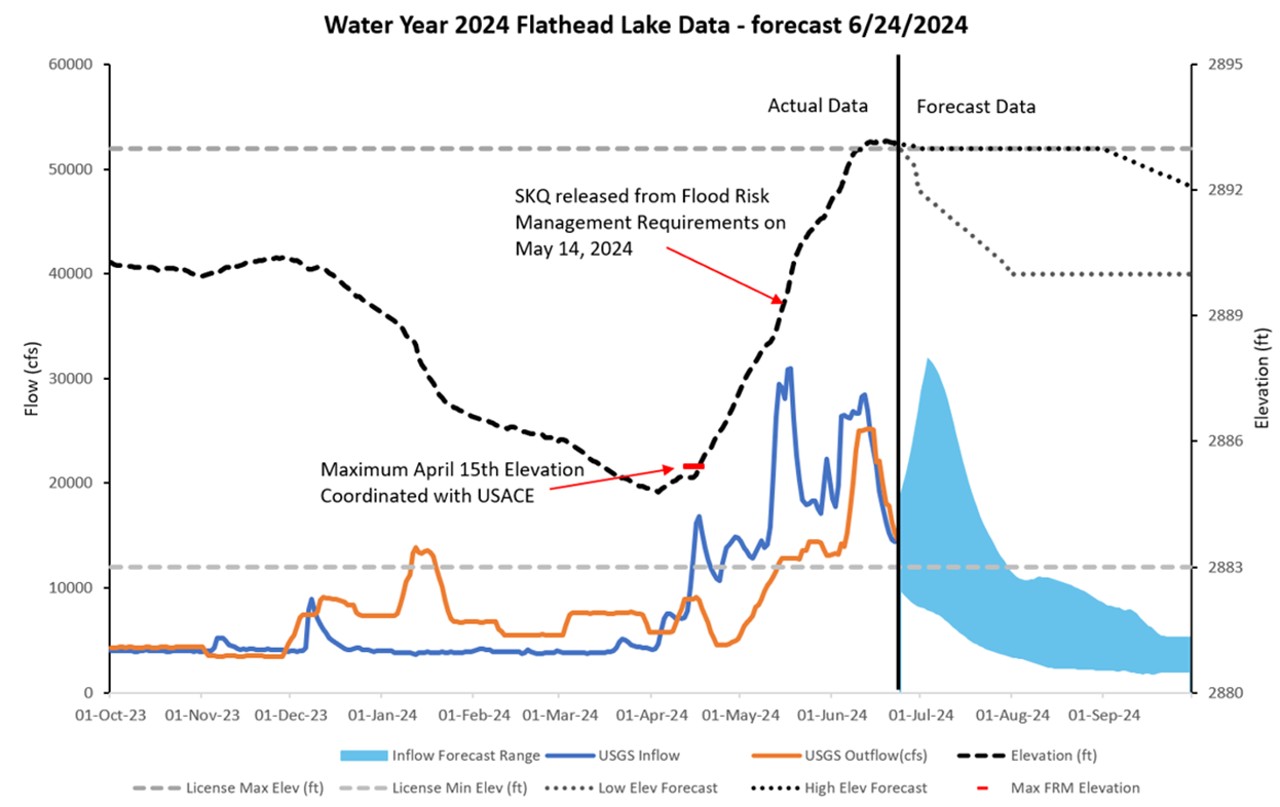
Flathead Lake remains at full pool. The water supply forecasts did not change much this week and summer flow volume remains near 63% of average. Project outflows will continue decreasing as Flathead Lake inflows recede.
SKQ project outflows and the Flathead Lake elevation are dependent on many variables including lake inflows, weather, the demand for electricity, and non-power constraints such as the downstream fishery and flood risk management needs.
June-17-2024_Lake-Data
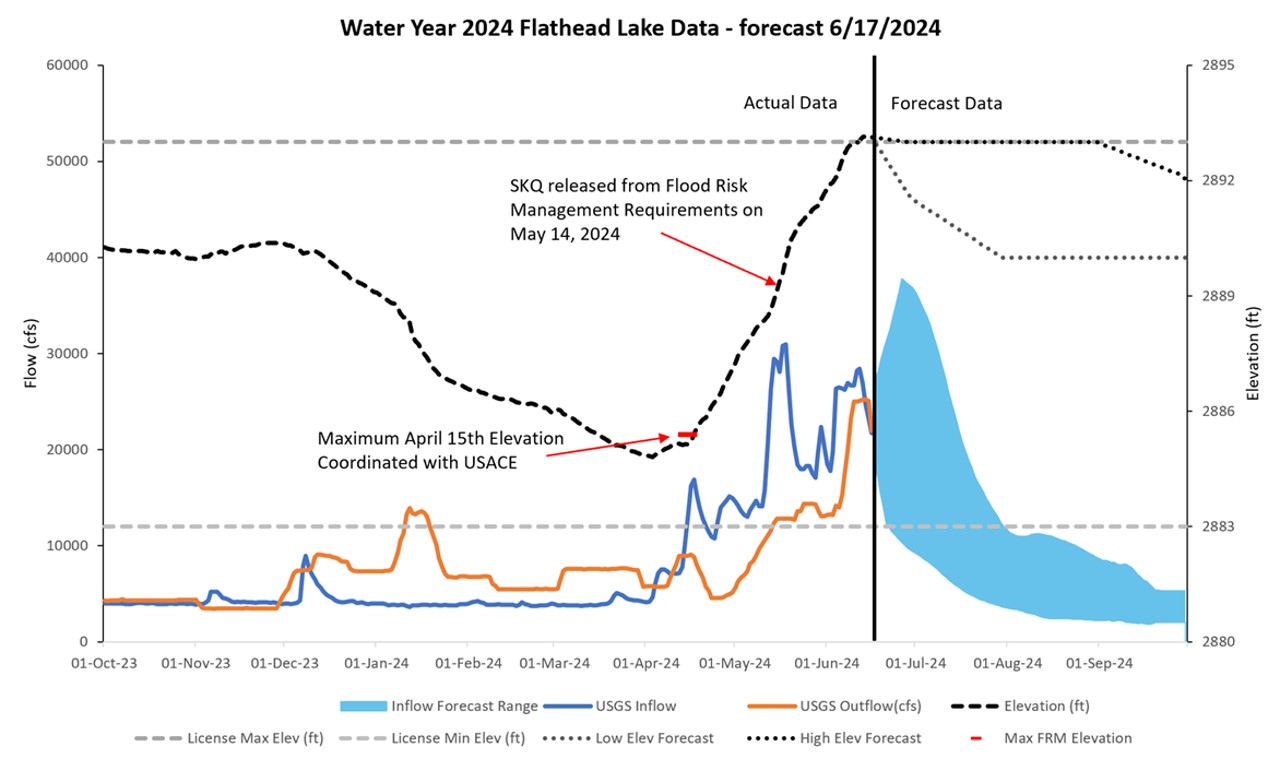
Flathead Lake remains at full pool. The water supply forecasts did not change much this week and summer flow volume remains near 64 percent of average. Project outflows will continue decreasing as Flathead Lake inflows recede. SKQ project outflows and the Flathead Lake elevation are dependent on many variables including lake inflows, weather, the demand for electricity, and non-power constraints such as the downstream fishery and flood risk management needs.
SKQ Drought Management Plan
Streamflow conditions in the Flathead Basin remain below normal and similar to 2023 and 2024 the project is being operated to increase the likelihood of meeting refill and minimum instream flow requirements (see SKQ’s drought management plan). January was incredibly dry in the basin and snowpack in the Northfork of the Flathead is low. However, there are still snow building months ahead.
Both weather and streamflows are highly uncertain. A warm and rainy event can rapidly increase streamflows in the spring, and similarly a cold and dry event can keep the streamflows quite low compared to normal. Temperatures, precipitation, and snowpack conditions such as density, all play a part in determining how high or low stream flows move as well as the timing of the runoff. If an early runoff is detected, EKI will coordinate flood risk management deviations with the USACE as needed to refill the lake.
SKQ project outflows and the Flathead Lake elevation are dependent on many variables including lake inflows, weather, the demand for electricity, and non-power constraints such as the downstream fishery and flood risk management needs.
